HOW THEY ARE MADE AND OTHER INFO
BROWSE BOWLS BY PRICE, SIZE, STYLE, ETC
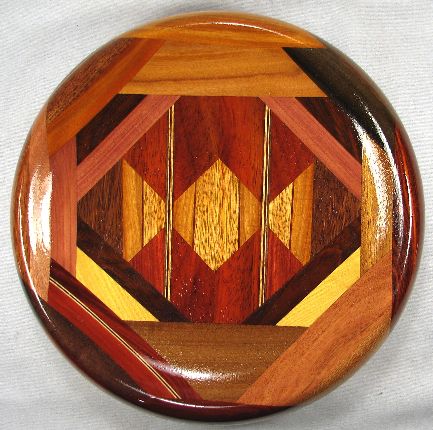 SOLD
SOLD
N74 --- $SOLD --- this is the orientation view --- more pics down below
diameter: 9 1/2"
height: 2 1/4"
finish: one application of natural stain then 2 coats of high gloss spar polyurethane (with UV blocker)>
WOODS USED: [SEE DISCUSSION ON THE MAIN PAGE OF THIS SITE IF ANY OF THIS IS UNCLEAR]
base: sapele
view 1: two ? brown woods separated by maple veneer and backed by maple veneer, then redheart over cherry, afrormosia
view 2: sliky oak, kuruguay, osage orange, dark cocobolo, BOX
view 3: cocobolo, tatajuba, limbali, BOX
view 4: partiridgewood, mineral-stained tulip poplar with dark green color, dark cocobolo, aromatic red cedar, BOX
view 5: paela with color variations, paela (light tan, relatively little orange), BOX
view 6: two pieces of machiche separated by maple veneer and backed by maple veneer, then sapele, paela, dark cocobolo, aromatic red cedar, BOX
view 7: jatoba over two pices of zircote separated by a slant of maple veneer, all over prima vera, makore, aromatic red cedar, limbali, BOX
view 8: redheart, thick birch veneer, redheart, maple veneer, redheart and all of that backed by walnut, all over sycamore, redheart, holly veneer, ebony veneer, holly veneer, redheart, osage orange, dark cocobolo, BOX
BOX: In the middle between the two vertical lamination is canary, thick mahogany veneer, canary in the middle with padauk above and below. The two vertical laminations are, from the inside towards the rim, thick mahogany veneer, thick oak veneer, thick mahogany veneer, maple veneer, thick walnut veneer. Outside the laminations is canary, thick mahogany veneer, canary, with padauk above and redheart below.
flaws/issues: none
comments: Not a bad or flawed piece of wood in this one and many that are quite nice. The tulip poplar in view 4 is particularly interesting (to wood affictionadoes anyway) because this wood is normally white, sometimes greenish or brown, but this piece is a uniform dark green (slightly lighter on the underside) due to mineral stain (a fairly common condition in tulip poplar).
The silky oak in view 2 exhibits some nice long ray flakes down the bottom outside and the sycamore in view 8 shows some nice ray flakes on the underside.
The outer paela in view 5 shows dark color stripes that are typical of paela when there has been an internal crack in the wood. Fortunately for both the upper and lower dark stripes the crack itself has been turned off.

view 3b
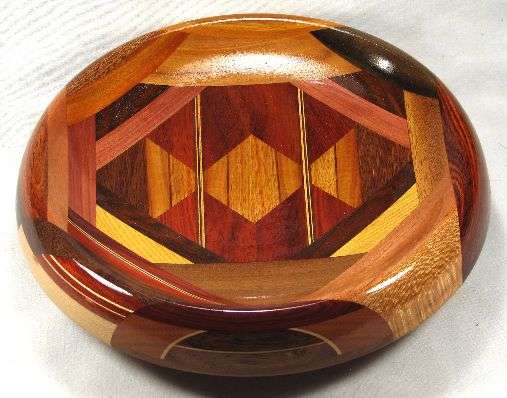
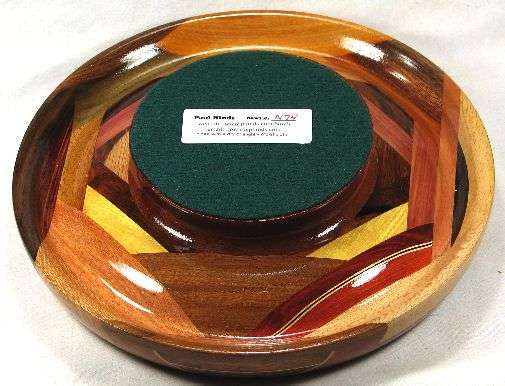
views 1c and 1d
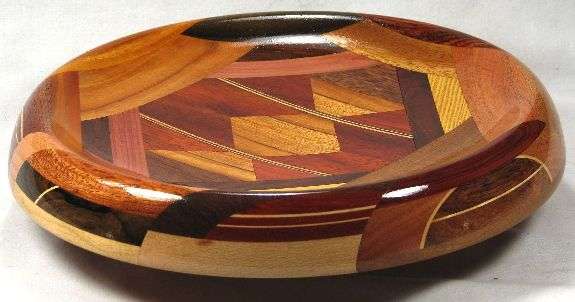
view 8a
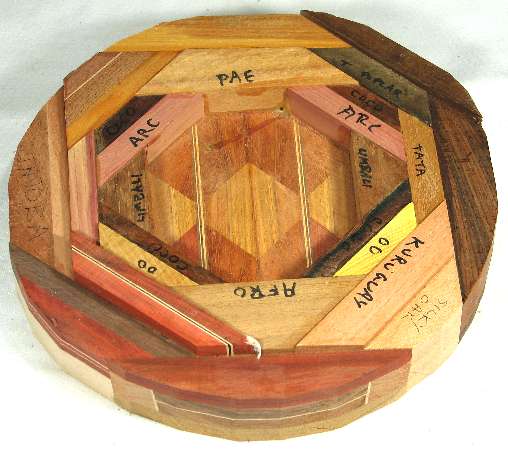

view 1c as bowl blank and as the finished bowl
 SOLD
SOLD





